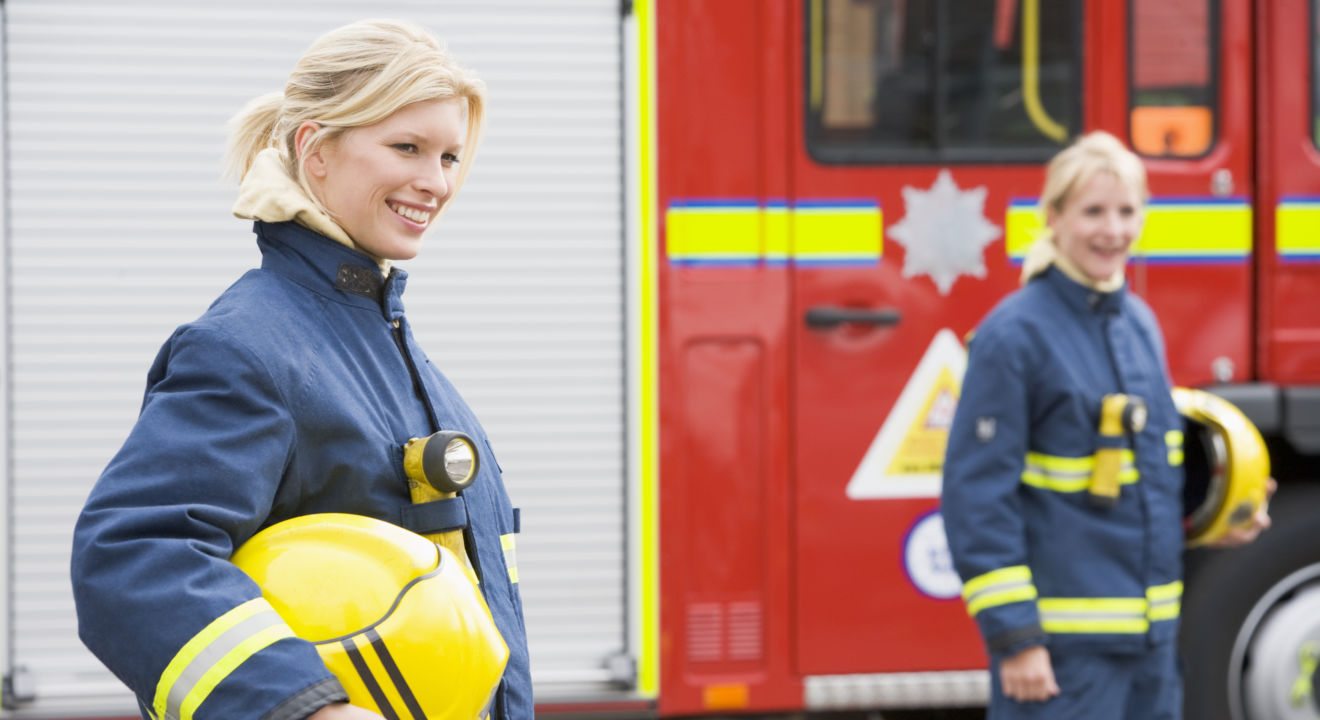Inspiration September 11, 2016


Firefighters are some of the most important workers in our communities. They perform life-saving labor on a daily basis as well as undertake the little things – like helping kittens from trees. But what does it take to become a firefighter? Are you up for the challenge?
If you’re interested in the career or just want to know what these men and women had to do to qualify for the job, here are the requirements to becoming a firefighter.
Potential firefighters must have at least a high school diploma and a valid driver’s license. Though firefighters must be 18-years-old in order to legally work, apprenticeships are available to young men and women.
To enter a training program, applicants take at least two exams: a written test and a Candidate Physical Ability Test (CPAT) test. The written exam usually consists of around 100 multiple choice questions and covers spatial awareness, reading comprehension, mechanical reasoning, logic, observation and memory. In addition, applicants must also pass a rigorous physical fitness test. They must be able to perform a long distance run in an allotted period of time, climb flights of stairs at rapid speeds and lift and carry up to 200 pounds.
Fire Rescue 1 also says that a majority of fire departments require that their workers have an Emergency Medical Technician (EMT) certification. “Since most fire departments run upwards of 70% or more emergency medical related responses, it only makes sense for them to require this as a prerequisite.” Additionally, this certification attained prior to applying means that you won’t have to spend as much time in training.
There are associate and bachelor’s degree programs at colleges, universities and trade schools for those who wish to pursue careers in fire science or paramedics or want to advance to leadership roles within firefighting agencies.
Fire Rescue 1 also suggests taking fire technology classes at a local community college. According to them, doing this shows “dedication, commitment and initiative towards your career of choice.” Many academies provide lessons on things like building construction and fire behavior.
Fire Science Online also says that these classes will help you achieve the U.S. Bureau of Labor Statistics (BLS) firefighter requirements. According to the website, firefighters must know how to:
Fire Rescue 1 says volunteering not only shows commitment, it is also a good way to “build your resume for those just getting started and [to] get great references.” You can volunteer at The American Red Cross or at burn camps to work with fire service professionals. Aside from these organizations, you can also volunteer at homeless shelters or big brother programs to strengthen your community. As Fire Rescue 1 writes, making an impact in one’s community is “what the fire service is all about.”
The Volunteer FD website offers these tips for prospective firefighters looking to volunteer at local fire stations:
Aside from the experience you will get, volunteering at a fire station can also help you answer important questions about your commitment to the firefighting business. According to Fire Recruit, it’s important to think about whether or not you are “wired” for the job. For example, “The best firefighters are those who have the ability to maintain their composure while multi-tasking and thinking on their feet in the face of life and death emergencies.”
Ask yourself: Is this you?
Volunteering will potentially expose you to the teamwork, physical strength and mental composure required to be firefighter.
Leadership and job paths often determine how much initial and ongoing education firefighters need. Some firehouses have weekly required training for all firefighters, while others have a full-time probationary period. Some even require a four-year apprenticeship before you can work in the field. Keeping up with training is an integral component of the job.
Fire Science Online says, “While many candidates ask how to become a fireman, you’d be surprised how few ask their prospective employers about the job stability and advancement opportunities.”
If you want to advance in the public sector, then you’re going to have to continue learning. You can go back to school to earn more advanced certifications to boost your rank, earnings and responsibilities. Fire Science Online says you can even “rise from firefighter to engineer and on to lieutenant, captain, battalion chief, assistant chief, deputy chief and fire chief.”
If these steps light a fire within, this courageous career may be for you.